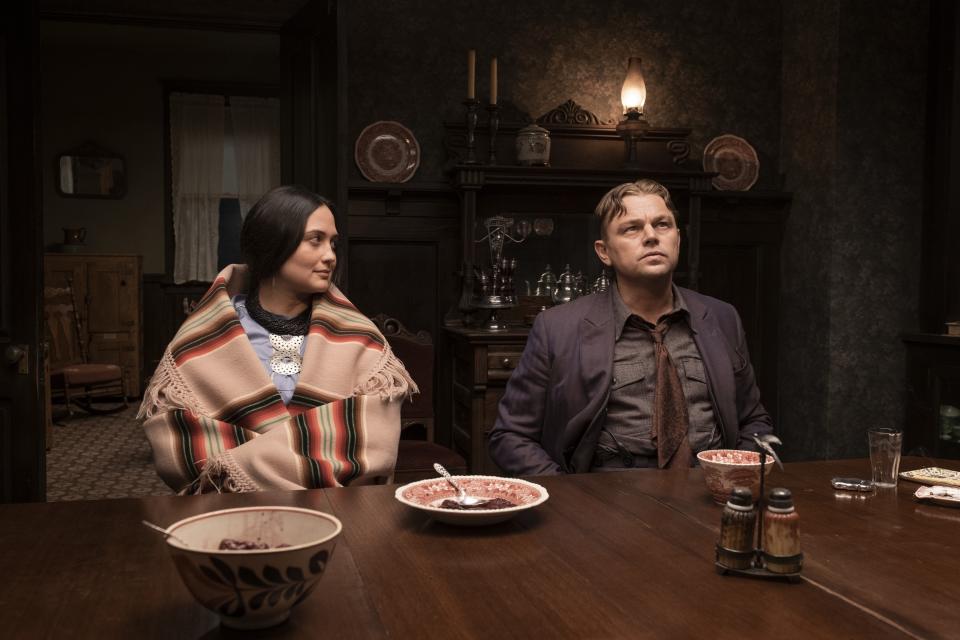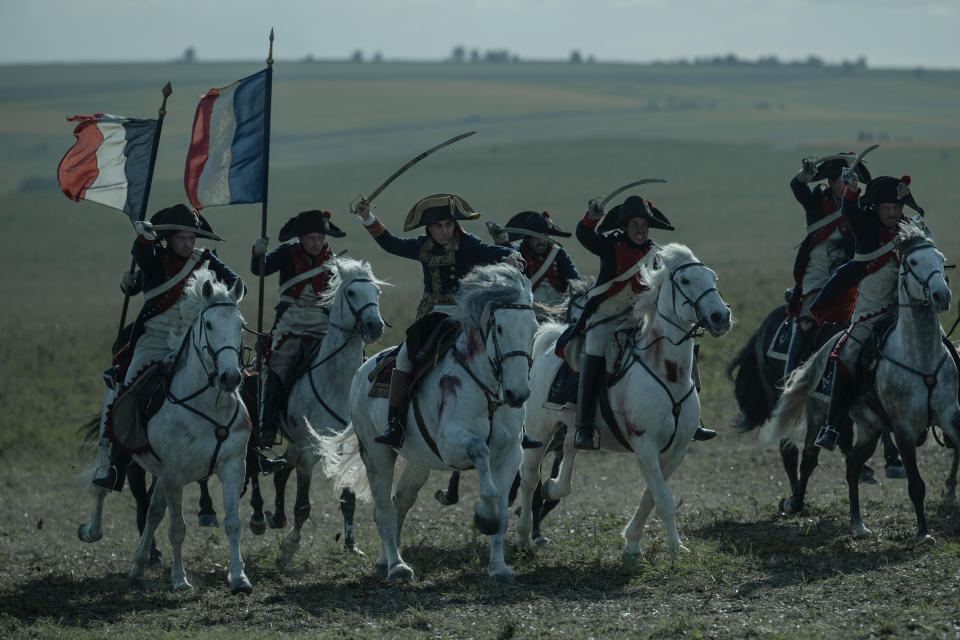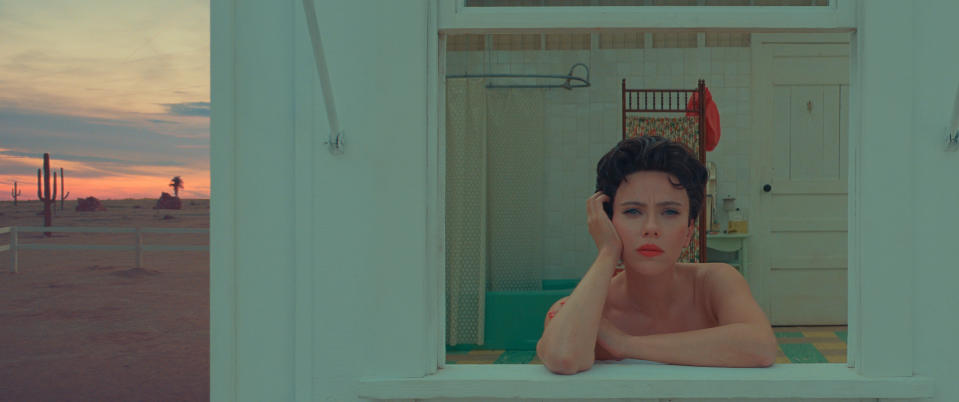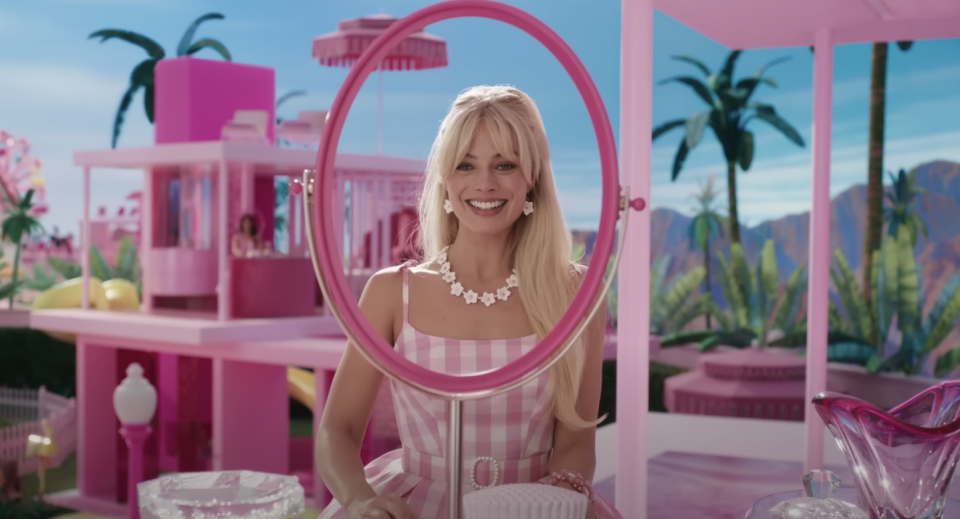11 Director-Craft Collaborations We’re Excited About in 2023

- Oops!Something went wrong.Please try again later.
- Oops!Something went wrong.Please try again later.
- Oops!Something went wrong.Please try again later.
- Oops!Something went wrong.Please try again later.
- Oops!Something went wrong.Please try again later.
- Oops!Something went wrong.Please try again later.
- Oops!Something went wrong.Please try again later.
- Oops!Something went wrong.Please try again later.
- Oops!Something went wrong.Please try again later.
- Oops!Something went wrong.Please try again later.
- Oops!Something went wrong.Please try again later.
- Oops!Something went wrong.Please try again later.
- Oops!Something went wrong.Please try again later.
- Oops!Something went wrong.Please try again later.
We’re still months away from clarity regarding this year’s Oscars race, but a glance at the upcoming releases reveals several likely craft contenders reuniting longtime collaborators or pairing intriguing sensibilities for the first time. Among them: Christopher Nolan’s “Oppenheimer,” Martin Scorsese’s “Killers of the Flower Moon,” Denis Villeneuve’s “Dune: Part Two,” Ridley Scott’s “Napoleon,” Bradley Cooper’s “Maestro,” Wes Anderson’s “Astroid City,” and Yargos Lanthimos’ “Poor Things.”
These concern momentous events — historical as well as fictional. The moral struggle of “Oppenheimer’s” titular scientist (Cillian Murphy) as a result of developing the atomic bomb; “Flower Moon’s” fact-based serial murders of Osage tribal landowners in Oklahoma in the ’20s, which led to the formation of the FBI; the continuation of the destructive messianic prophecy in “Dune”; the titular military genius (Joaquin Phoenix) consumed by love and power in “Napoleon”; the complex life of legendary conductor-composer Leonard Bernstein (Bradley Cooper) in “Maestro”; the alien disruption of an American desert town in 1955 in “Asteroid City”; Michael Fassbinder’s hitman caught in a moral and political trap of his own making in David Fincher’s “The Killer”; the gender-bending re-imagining of “Frankenstein” in “Poor Things”; and the struggle to break the cycle of racism and sexism in the South in the musical adaptation of “The Color Purple.”
More from IndieWire
How 'Polite Society' Created an Exhilarating Blend of Action from 'The Matrix,' Eunice Huthart, More
Then there’s the subversive eye candy of Greta Gerwig’s “Barbie” and Paul Young’s “Wonka,” with Margot Robbie and Ryan Gosling going on a wild adventure as Mattel’s favorite plastic couple come to life in the former, and Timothée Chalamet portraying a young version of Roald Dahl’s eccentric candy king in the latter.
Not only are we looking forward to the imaginative and innovative crafts work in these upcoming films, but also the continuing or new collaborations between directors and their craftspeople. Here are the 11 that we’re most excited about.

Apple
Christopher Nolan and cinematographer Hoyte van Hoytema, “Oppenheimer”
This marks the fourth consecutive collaboration between Nolan and van Hoytema (following “Interstellar,” “Dunkirk” and “Tenet”). They continue to break large format boundaries together with the IMAX camera in terms of visual quality and more daring camera movement. “Oppenheimer” marks the director’s first biopic, as he returns to the signature style of his breakout hit, “Memento,” by playing with time and color to convey Oppenheimer’s troubled state of mind. Shot in both 65mm and 35mm, the big innovation here is shooting for the first time in black-and-white IMAX, thanks to a partnership between Kodak/FotoKem/IMAX and Panavision to support the special workflow. Van Hoytema, who’s only been Oscar-nominated once for “Dunkirk,” should be on track for another nomination because of the film’s gravitas and aesthetic importance.
Martin Scorsese and costume designer Jacqueline West, “Killers of the Flower Moon”
In place of go-to costume designer Sandy Powell, Scorsese collaborates for the first time with four-time Oscar nominee West (“Dune,” “The Revenant,” “The Curious Case of Benjamin Button,” and “Quills”) on his first Western. It’s based on the nonfiction book by David Grann and stars Leonardo DiCaprio and Robert De Niro as nephew and uncle caught in a family skirmish concerning Osage oil rights, given the nephew’s sympathies with the tribal landowners and mixed marriage. West came to Scorsese via her work with DiCaprio and this marks her first period Western. Look for West to be an Oscar contender for both this and “Dune: Part Two.”
Denis Villeneuve and editor Joe Walker, “Dune: Part Two”
Following his Oscar-winning work for “Dune,” Walker reunites with Villeneuve for the second part of the director’s Frank Herbert-adapted passion project. This will emphasize the holy war on the desert planet Arrakis, with lots of battles for the nomadic Freemen, led by would-be messiah Paul (Chalamet). So expect a different rhythm but more of the epic and intimate balancing act in delivering Villeneuve’s sensory power. “Part Two” (which could lead to “Part Three”) marks the fifth consecutive film together for director and editor, following “Dune,” “Blade Runner 2049,” “Arrival,” and “Sicario.” Each has revealed a deepening cinematic bond between trauma and beauty and has benefited from Walker’s ingenious understanding of sound and score, which deepens the cinematic experience.
Ridley Scott and costume designers Janty Yates and David Crossman, “Napoleon”
“Napoleon” is the latest in a 15-film collaboration between Scott and Yates that spans more than 20 years, beginning with “Gladiator” in 2000 (for which the costume designer won the Oscar). For the last several years, they’ve focused on period pieces, including “All the Money in the World,” “The Last Duel,” and “House of Gucci.” Yet “Napoleon” represents their most ambitious collaboration since “Gladiator.” In fact, the director reshaped the script (originally titled “Kitbag”) to fit star Joaquin Phoenix’s personal take on Napoleon Bonaparte. The film is probably the most expansive cinematic depiction since Abel Gance’s silent classic, “Napoleon.” It explores his rise to power as general and emperor, fueled by his obsessive love for his wife, Joséphine (Vanessa Kirby). With its extensive battles, however, there was the need to take on an additional costume designer, David Crossman (“Indiana Jones and the Dial of Destiny,” “The Batman”), to handle the vast array of military uniforms.

Courtesy of Apple
Bradley Cooper and cinematographer Matthew Libatique, “Maestro”
Cooper reunites with Libatique following his “A Star Is Born” directorial debut — only this time they shot on 35mm for “Maestro,” which explores the love story between Bernstein and Felicia Montealegre (Carey Mulligan), spanning three decades and a 25-year marriage. However, this film will require a completely different visual language in terms of lighting and camera moves to depict the particular dynamics of this love story and the period looks of the ’40s, ’50s, and ’60s. In addition, judging from the pattern they established on “A Star Is Born,” we can also anticipate that the musical rhythms will be in keeping with Bernstein’s outsized personality.
Wes Anderson and production designer Adam Stockhausen, “Asteroid City”
In their fifth film, Anderson and Stockhausen explore an American desert town of the mid-’50s for “Asteroid City,” about an alien invasion that disrupts the annual science convention inhabited by the ensemble cast (which includes newcomer Tom Hanks). It’s as far afield as can be from the eclectic worlds of “Moonrise Kingdom,” The Grand Budapest Hotel,” “Isle of Dogs,” and “The French Dispatch.” As always, it was shot in 35mm, but this time the oddly shaped world evokes a very green and orange Kodachrome look for the director’s preferred symmetrical and tableaux-like compositions.

Courtesy of Pop. 87 Productions/
David Fincher and cinematographer Erik Messerschmidt, “The Killer”
After Messerschmidt’s Oscar-winning, monochromatic cinematography for “Mank,” he and Fincher follow up with the existential neo-noir world of “The Killer,” adapted from the French graphic novels by Andrew Kevin Walker (“Seven”). While the genre might be closer to their previous “Mindhunter” TV series, we don’t expect the visual style to be anything like the ’70s serial killer Netflix show. Rather, the cold, calculating personality of Michael Fassbinder’s hitman will no doubt be reflected in the choice of lighting and lenses and methodical camera movement.
Yargos Lanthimos and cinematographer Robbie Ryan, “Poor Things”
Director and cinematographer reunite after “The Favourite” (for which Ryan was Oscar-nominated) for a twisted Victorian horror riff, adapted from the Alasdair Gray novel by Tony McNamara (“The Favourite”). It’s about a woman (Emma Stone) brought back from the dead by her father (Willem Dafoe), whose brain gets replaced by that of her unborn child. Like “The Favourite,” it’s shot in 35mm, and we can probably expect another visual tour de force with natural light, wide-angle lenses, and daring camera moves.
Blitz Bazawule and composer Kris Bowers, “The Color Purple”
The Ghanaian director-rapper (“Black Is King,” “The Burial Of Kojo”) collaborates with Bowers (“Chevalier,” “Bridgerton,” “Green Book”) on the score for the Tony-winning stage musical by Marsha Norman, Brenda Lee, Allee Willis & Stephen Bray. It features songs by Lee, Willis & Bray, and stars singer Fantasia recreating her role as Celie Harris Johnson. The Juilliard-trained composer and pianist is a perfect fit to expand the musical world of “The Color Purple” and wrap it around the songs, with his jazzy style. His Duke Ellington influence will no doubt serve him well here.
Greta Gerwig and production designer Sarah Greenwood, “Barbie”
The first live-action “Barbie” film, co-written by Gerwig and Noah Baumbach, has already spawned a “Barbiecore” trend for neon pink and yellow in clothing, makeup, and interior design, thanks to early publicity photos of Robbie and Gosling. This marks the first collaboration between Gerwig and Greenwood, the six-time Oscar nominee, best known for her 23-year partnership with director Joe Wright (“Anna Karenina,” “Atonement”). She is a master at period world building — setting an authentic and richly detailed time and place. But “Barbie” offers something completely different for both the director and production designer: a kitschy, playful, and surreal world of ’60s artifice, which is totally fun.

screenshot/Warner Bros.
Paul King and costume designer Lindy Hemming, “Wonka”
King and Hemming (an Oscar winner for “Topsy Turvy”) have already done wonders in their two charming and hilarious “Paddington” films, which bodes well for the “Wonka” musical fantasy origin story about the ambitious young candy maker trying to build his empire and first encountering the Oompa Loompas. The singing and tap-dancing Chalamet seen in last year’s sizzle reel looked sweet, but there are rumors of dark overtones. However, early glimpses of Wonka’s Victorian-like outfit reveal a more distinguished and surprising look than we’re used to from Gene Wilder and Johnny Depp.
Best of IndieWire
Every Palme d'Or Winner from the Cannes Film Festival, Ranked
Martin Scorsese's Favorite Movies: 60 Films the Director Wants You to See
Sign up for Indiewire's Newsletter. For the latest news, follow us on Facebook, Twitter, and Instagram.


